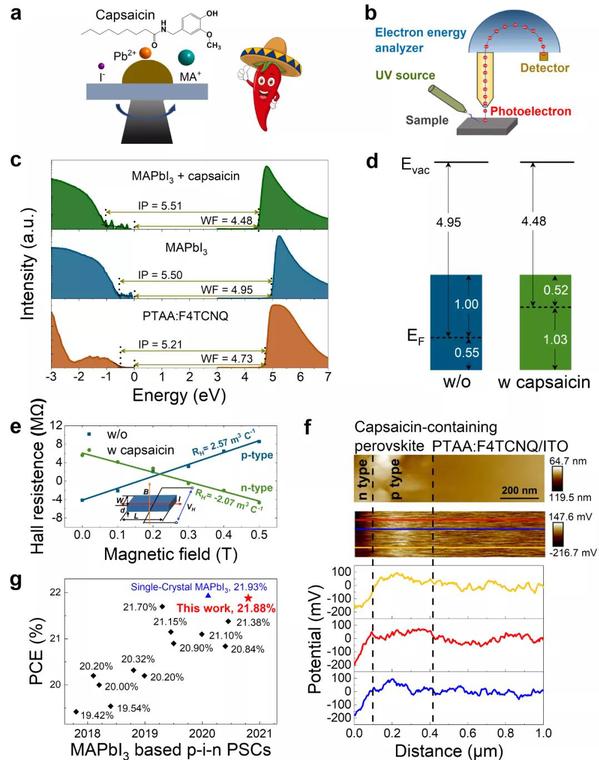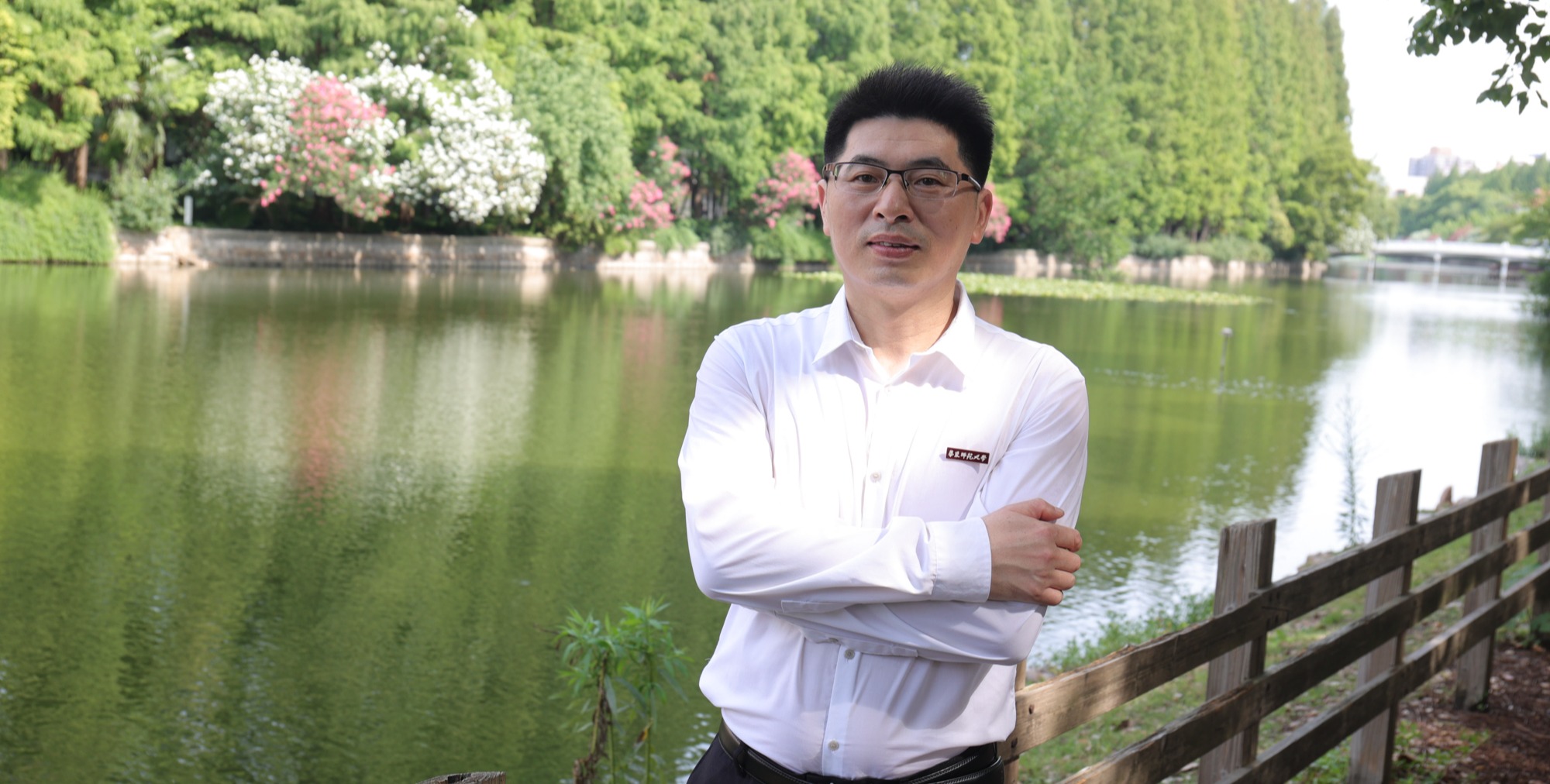Professor Bao Qinye, of ECNU School of Physics and Electronic Sciences, introduced the natural molecular capsaicin as additive to perovskite semiconductor. Combined with photoelectron spectroscopy and optoelectronic devices, this unprecedented study is the first time to directly observe the new phenomenon in surface electronic structure of soft matter perovskite semiconductors changing from p-type to n-type.
The achievement was published in Joule, a journal of Cell, with the title of “Direct observation on p- to n-type transformation of perovskite surface region during defect passivation driving high photovoltaic efficiency”.
ECNU is the first unit of the thesis. Xiong Shaobing, a doctoral student, and Hou Zhangyu, an undergraduate student, are the first author and co-first author of the thesis respectively.

Professor Bao Qinye (middle), Xiong Shaobing (right) and Hou Zhangyu
Perovskite solar cells (PSCs) suffer from significant nonradiative recombination, limiting their power conversion efficiencies. Here, for the first time, we directly observe a complete transformation of perovskite MAPbI3 surface region energetics from p- to n-type during defect passivation caused by natural additive capsaicin, attributed to the spontaneous formation of a p-n homojunction in perovskite active layer.
We demonstrate that the p-n homojunction locates at ∼100 nm below perovskite surface. The energetics transformation and defect passivation promote charge transport in bulk perovskite layer and at perovskite/PCBM interface, suppressing both defect-assisted recombination and interface carrier recombination.
As a result, an efficiency of 21.88% and a fill factor of 83.81% with exceptional device stability are achieved. To date, both of those values are the highest records for polycrystalline MAPbI3 based p-i-n PSCs reported.
The synergetic defect passivation and energetic modification via additive proposes a new concept and provides a huge potential for further improvement of PSC performance.

a. solution spin coating of soft semiconductor thin film; b. schematic diagram of photoelectron spectroscopy; c-e. the complete transformation of the surface electronic structure of perovskite semiconductor from p to n type; f. the formation of p-n homogeneous junction; g. device efficiency
Bao Qinye's research group has focused on the control of electronic structure and photoelectric characteristics—based on photoelectron spectroscopy and synchrotron radiation characterization technology—of soft matter semiconductor interfaces. Recently, the team has made a series of important scientific research progress, such as Adv. Mater. 2020, 32,2002344; Adv. Energy Mater. 2020, 10, 2000687; Nano Energy 2020,76, 105019; Nano Energy 2021, 79, 105505.

The research group plans to use green and sustainable forest-based biological additives, combined with non-toxic and lead-free perovskite semiconductors, for future studies, in hopes to ascertain completely green perovskite electronic devices.
Source: School of Physics and Electronic Science, China Science Daily
Copy editor: Bao Qinye
Editor: Yuan Yiwei


















